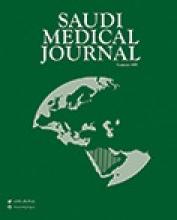Abstract
OBJECTIVE: To investigate the knowledge, attitude, and practice of reproductive behavior in Iranian minor thalassemia couples in Ghaemshahr City, Mazandaran, Iran.
METHODS: This is a cross-sectional descriptive survey conducted in 2006. Birth rates from 1997-2005 and the number of newly registered patients from at risk couples was recorded. Tools for data collection were a valid questionnaire containing epidemiologic characteristics of couples, knowledge (20 questions), attitude 20 statements, and practice by studying the family file in health centers. Questionnaires were completed by husband and wife separately. Actual versus expected numbers of patients born in that period were compared. The data were analyzed using the Statistical Package for Social Science version 13.00, and p<0.05 was interpreted as significant.
RESULTS: Of the 240 at risk couples, 100 were studied. Of them, 82% had good knowledge of thalassemia, and 68.5% had a positive attitude toward thalassemia prevention program. Correlations of knowledge with attitude were significant (p<0.001), and 50% of the couples had unfavorable practice including unplanned pregnancy, fetal abortion without prenatal diagnosis (PND), delivery without PND, and having a child affected by thalassemia major (TM). Without PND, 4 TM patients were born. Ninety-eight episodes of unfavorable practice were reported. Meanwhile, the contraceptive method used by 12% of couples was unsafe. Suspected TM patients with no prevention program were 25; thus, the birth of 2 TM was prevented (92% reduction).
CONCLUSION: We achieved great success during the last 9 years in the region, and TM prevention program improved knowledge, attitude, and practice in high-risk couples and carrier families. We achieved great success during the last 9 years in the region, and TM prevention program improved knowledge, attitude, and practice in high-risk couples and carrier families.
- Copyright: © Saudi Medical Journal
This is an open-access article distributed under the terms of the Creative Commons Attribution-Noncommercial-Share Alike 3.0 Unported, which permits unrestricted use, distribution, and reproduction in any medium, provided the original work is properly cited.






